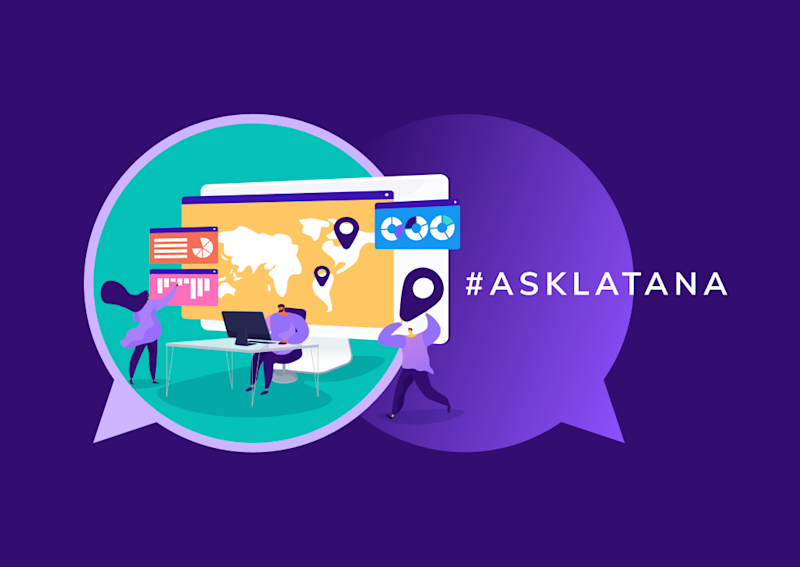With so many companies vying for consumer attention, brands need to get serious about increasing their brand awareness. And while there’s no magic trick to do so, one way to improve this KPI is to utilize target audiences.
It’s not always about how you’re marketing, it’s who you’re marketing to.
If your target audience isn’t responding to your brand campaigns, your brand awareness will suffer. Failing to address unsuccessful communication with your target audience could harm your profits long-term.
Today, 56% of consumers think brands should show a deeper understanding of their needs. Investing time and money into your target audience provides greater insights into how you can better serve your ideal user and market more effectively.
To provide context to our claim, we’ll be looking at a few British travel & lifestyle companies to explore their differences in brand awareness across audiences.
Why Knowing Your Target Audience is Important to Improving Brand Awareness
First, let’s discuss why your target audience plays such an important role in overall brand awareness. For the purpose of this example, you’ll need to swap your brand manager hat for a consumer hat.
Now, think back to a brand campaign that has shown up in your social media feed and left you wondering why you were seeing it. If you’re a runner, you’re probably not the best fit for a yoga product ad. If you hate wine, you’re not going to pay attention to a wine subscription service.
While the examples are endless, the main takeaway is that your brand campaigns will go unnoticed if they are seen by the wrong people. This is something you cannot afford to let happen, especially as consumer mind space has become increasingly oversaturated. With ads from 1000s of different brands constantly vying for customer attention, it’s understandable that they want ads that actually speak to their needs.
If you want to increase brand awareness in an efficient and long-term way, take the time to define your target audience and then target them directly. To provide an example of a brand that really knows its target audience, let’s take a look at Cosmopolitan.
Cosmopolitan Target Audience
Cosmopolitan is a women's magazine that inspires readers to believe they can have it all: a hotshot career, a fashionable wardrobe, and a thriving relationship. Considered a market leader, 18 to 34-year-olds are their core target audience.
Though the magazine is appealing to all ages, when we look at the diverse marketing activities Cosmo undertakes, it’s pretty clear that they’re trying to appeal predominately to their target audience — showing various ads for jewelry, dresses, and handbags.
Photo Source: Unsplash
To ensure you’re reaching your target audience successfully, take a page from Cosmo’s book and consider the following for each brand marketing campaign:
Focus
If you’re marketing to everyone, you might as well be marketing to no one — your marketing efforts need to be focused. When you know who your main target audience is, you can more easily tune in to their needs, desires, and interests.
Special messaging
Brands with a clear target audience know what their chosen demographics want and need. And when creating ads, they’re talking directly to this group. With a defined audience in mind, you can craft more effective messages.
Targeted spending
If you’re running your brand campaigns as paid ads on Facebook or Instagram, you need to ensure your campaigns are being targeted to your defined audience. Don't let the platform choose for you — take the time to select the characteristics that truly match your target audience. What's the point in crafting special messages if they’re shown to the wrong people?
As a brand manager, you’re working with limited resources, and you can’t afford to waste time and money talking to the wrong audience. However it becomes much easier to see a target audience’s potential when you track your brand awareness.
For example, it wouldn’t make sense for travel brands to focus their marketing efforts on homebodies. While most everyone occasionally travels, a travel brand’s marketing budget is better spent targeting consumers who will regularly use their products or services.
Plus, even the biggest brands don’t market to everyone. You don’t see Coca-Cola advertising their soda to health enthusiasts, do you? Coca-Cola knows its audience, and it markets to these consumers efficiently.
To drive this point home, let’s take a closer look at a few travel brands in the UK to better understand how defining your target audience can improve brand awareness.
Brand Awareness & Niche Audiences: Travel Brands in the UK
If we disregard the individual results in the above infographic for a moment, we can focus on the main piece of information provided: not all audiences perform the same.
Look at Kayak. If they decided to opt for catch-all marketing across the general population, they would have a brand awareness level of 59%. Now, that’s not bad at all — just 1% off Airbnb and high enough to very likely drive sales and profit.
However, their brand awareness shoots to 73% amongst Millennials, overtaking Airbnb by 10%. It’s abundantly clear that by focusing on a more niche audience, Kayak has the potential to grow even further. Let's examine the remaining brand tracking data this infographic provides for more insights.
1. Offer Value to Improve Your Relationship with Consumers
You can improve your relationship with consumers by offering the value that they’re looking for in a product. In the above infographic, we can see that Secret Escapes really knows how to reach the right customers.
Amongst the general population in the UK, they’re lagging behind in third place with a brand awareness score of 54%. However, when it comes to Millennials, this increases to 67%. Considering Secret Escapes specializes in discount luxury travel, Millennials are the ones most likely to benefit from their offerings — as their product appeals to young, budget-savvy travelers looking to get more bang for their buck.
If Secret Escapes decided to utilize brand monitoring, they may be able to gain further insights into their Millennial audience, allowing them to take over even more of this precious market space.
2. Define Your Target Audience to Save Time and Money
Defining your target audience makes it easier to track your brand awareness — plus it saves your company time and money.
Targeting the general population with your brand campaigns is expensive and ineffective. If your product doesn't fit people's needs, they won't buy it regardless of how many of your ads they see. What’s the point in that?
So, how do you use your money and time to increase brand awareness effectively and efficiently? Track your target audience and your competitors. See if they’re outperforming you with key audiences. If they are, research their strategies and decide what you can feasibly implement into your own.
With just a bit of digging, it’s easy to find gaps to take advantage of in your competitors’ marketing campaigns. Kayak, in particular, doesn’t have a very impressive blog, publishing posts about once a month. If they put more time and effort into their blog content, they could take an even stronger lead in terms of their Millennial brand awareness.
Additionally, they could ensure Secret Escapes — who are not very far behind — don't catch up. Millennials love online content. Remember that.
Similarly, Airbnb’s blog focuses more so on hosts rather than travelers. While they provide great tips for improving your success as an Airbnb host, they’re not utilizing this medium to attract potential travelers.
Companies who publish blog content receive 97% more links to their website. This doesn’t only apply to blogging — while Secret Escapes has their own YouTube channel, they’re lacking in video content and haven’t published anything new in over a year. If they spent more time developing this area, they could gain more traction amongst their target audience.
These are just a few examples, but it’s clear there’s a large gap in blog and video content concerning travel brands. If a new travel service plans to enter the market, this is an area they could easily build upon to create a niche within the Millennial audience.
3. Use Emotional Marketing to Connect with Your Target Audience
When you focus on a target audience, you become an expert in this group. As previously mentioned, consumers want to feel like their favorite brands are listening to them.
One way to do this is by creating brand messages that will resonate emotionally with your target audience. As an example, let's look at Skyscanner.
Skyscanner was lagging behind all other brands in all target audiences we tracked — including the general public. Could this be due to ineffective messaging? Back in September 2019, Skyscanner admitted that they needed to make a change.
They pointed to their lack of brand structure and clear target audience as the primary reason they struggled to gain a foothold in this competitive market. To address these issues, they decided to rebrand their marketing to cater more specifically to their target audience — hoping to strengthen their emotional ties to young, seasoned travelers.
Source: MarketingWeek
Based on feedback from Andrea Sipos, Skyscanner’s Principal Product Manager, it seems as though Skyscanner’s rebrand was a success.
So, what can we learn from this? A well-planned and well-executed rebrand is a technique that many a company could utilize to ensure their audience responds positively to what they’re communicating.
4. Employ Brand Tracking to Overtake the Competition
When you use brand tracking to focus on your target market, you can increase your overall brand awareness to beat out the competition. It isn’t only about how your audience responds to your brand — you also need to understand how they’re responding to your competitors.
Let’s look at Airbnb. Many think of Airbnb as being extremely in-tune with youth travel — yet they’re still falling behind Kayak concerning younger audiences. How can they come out ahead?
Consider Airbnb’s recent campaigns. Compared to those from the US or China, young people from the UK are less likely to stay in a home when they travel. This could indicate that either Airbnb’s brand messaging isn’t effective in the UK or they’re focusing on the wrong things. Basically, Airbnb isn’t selling the travel experience young British people are looking for.
But, they have been working on this. Airbnb grew its “Experiences” category by over 2500% in 2018 alone. This means they’re focusing more on advertising their adventures and activities rather than homestays.
Additionally, in April 2020, they launched their “Online Experiences”, allowing consumers to “travel from home” by engaging in their experiences online to help sustain hosts.
Source: Airbnb
From learning to make gnocchi to uncovering the secrets of magic, Airbnb made sure that their activities were appealing to a wide range of potential customers in an effort to out-perform their rivals.
Final Thoughts
Is your target audience working for you? If you want to increase your brand awareness, you need to know exactly who your marketing materials are talking to.
Brand awareness is not a static number — it’s constantly evolving with your audience. Which means there’s no room to coast. From becoming an expert in your audience to focusing on the right user demographics, you can take important steps to set your brand apart from the crowd.
Using a brand tracker to monitor your target audience will indicate how profitable and successful you’re likely to be — and, of course, if you’re increasing your brand awareness. Most importantly, brand tracking will show you if your precious budget is being used on the right audience — something that was previously been extremely difficult to discover.
Target audiences are important. As a brand manager, don’t ignore one of your most powerful tools for success — start tracking your target audiences today!
Updated by: Cory Schröder on May 2021





![Illustration of a planet in hands [Thumbnail]](http://images.ctfassets.net/7so8go2zrvbw/3E9D2NQR0XnyejjzK7NoP7/ac311098c24fe0d0cf9942cd007c788f/Blog_SEO-Thumbnail_1000X709_-_2022-10-04T141755.234.png?w=800&h=567&q=95&fm=png)
